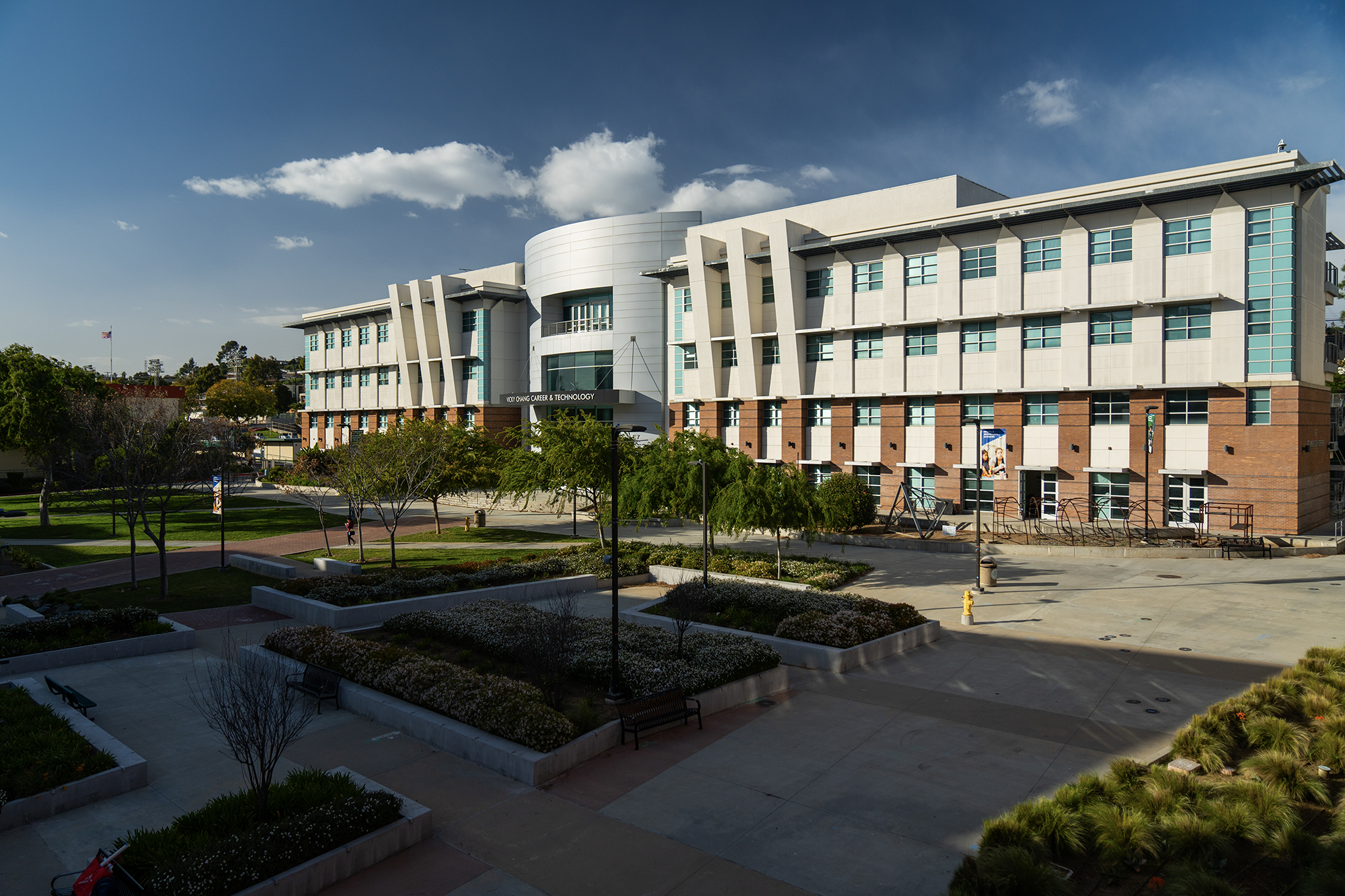Report on Socio-Economic and Educational Challenges in California’s Inland Empire in Relation to Sustainable Development Goals
Executive Summary
A report by the Public Policy Institute of California highlights a significant paradox in the Inland Empire: while high school graduation rates surpass the state average, college enrollment and completion rates lag considerably. This discrepancy is influenced by a combination of educational preparedness, regional economic factors, and community challenges. These issues directly impact the region’s progress toward several key United Nations Sustainable Development Goals (SDGs), including SDG 4 (Quality Education), SDG 8 (Decent Work and Economic Growth), SDG 10 (Reduced Inequalities), SDG 2 (Zero Hunger), SDG 7 (Affordable and Clean Energy), and SDG 16 (Peace, Justice and Strong Institutions).
Educational Attainment and a Commitment to SDG 4: Quality Education
The primary challenge identified is the gap between high school completion and readiness for higher education, a core tenet of SDG 4, which aims to ensure inclusive and equitable quality education and promote lifelong learning opportunities for all.
Key Statistical Disparities
- High School Graduation: Inland Empire students have an 88% graduation rate, compared to the 86% statewide average.
- College Preparatory Coursework (A-G): Only 48% of Inland Empire students complete the A-G requirements necessary for admission to UC or CSU systems, significantly below the 60% statewide figure. This failure to provide college-ready curricula is a barrier to achieving SDG 4 Target 4.3 (equal access to affordable and quality technical, vocational and tertiary education).
- College Enrollment: Consequently, just 57% of Inland Empire graduates enroll in college, versus 65% of their peers across California.
- Community College Transfers: Only 31% of Inland Empire community college students transfer to a four-year institution within six years, compared to 40% statewide.
- Bachelor’s Degree Attainment: A mere 25% of residents aged 25-54 hold a bachelor’s degree, starkly contrasting with the 41% state average. This outcome undermines progress toward SDG 4 Target 4.4 (substantially increase the number of youth and adults who have relevant skills… for employment, decent jobs and entrepreneurship).
Economic Landscape’s Impact on SDG 8: Decent Work and Economic Growth
The regional economy presents both opportunities and challenges to achieving SDG 8, which promotes sustained, inclusive, and sustainable economic growth, full and productive employment, and decent work for all.
Analysis of Economic Factors
- Dominant Industries: The transportation, logistics, and healthcare sectors have driven most job growth. Many positions in these industries do not require a college degree, attracting high school graduates with the promise of immediate income.
- Wage Disparity and Opportunity Cost: While these jobs offer better-than-minimum-wage pay, they often have limited long-term career potential. This creates a perceived trade-off that discourages investment in higher education, which is crucial for the higher-skilled workforce needed for long-term sustainable economic growth as envisioned in SDG 8.
- Barriers to Higher Education: The high cost of college, coupled with delayed returns on investment, can discourage students and families, particularly in a region where wages are nearly 40% lower than the state average. This economic pressure creates a cycle that hinders social mobility and contributes to inequality, a challenge addressed by SDG 10.
Strategic Interventions to Advance Educational Equity (SDG 4 & SDG 10)
The report outlines several actionable strategies to bridge the educational gap, directly aligning with the goals of SDG 4 (Quality Education) and SDG 10 (Reduced Inequalities).
Recommended Actions
- Align Graduation Requirements with A-G Standards: Mandating that all high school graduates complete the A-G course sequence ensures they are college-ready, directly promoting equitable access to higher education.
- Implement Dual Enrollment Programs: Allowing high school students to earn college credits provides a head start on higher education, making a degree more attainable and affordable.
- Integrate College Application Support: Providing dedicated time and assistance for college registration and financial aid applications during the school day removes barriers and has already shown a significant increase in university commitments.
- Promote Early College Exposure: Initiatives like UC Riverside’s Middle School Initiative introduce younger students to university life, fostering a college-going culture from an early age.
- Engage Families with Accurate Information: Counteracting misinformation about higher education by providing clear data on the long-term benefits of a college degree—including higher wages, better health benefits, and improved quality of life—is crucial for family buy-in.
Regional Conflicts in Sustainable Development: Agriculture and Energy
A conflict in Imperial County illustrates the complex trade-offs required to achieve different Sustainable Development Goals, specifically the tension between SDG 2 (Zero Hunger) and SDG 7 (Affordable and Clean Energy).
Land Use Dilemma
- Protecting Farmland (SDG 2): The Imperial Irrigation District has called for a moratorium on converting productive agricultural land into solar farms. California’s farm sector is vital to national food security, and the loss of over 1.6 million acres of farmland between 1984 and 2018 threatens the goals of sustainable agriculture and food production.
- Promoting Renewable Energy (SDG 7): Simultaneously, the state is mandated to develop alternative energy sources, such as solar farms, to meet climate goals and ensure access to affordable, reliable, and sustainable energy for all. This conflict requires integrated policy-making to balance food security with clean energy objectives.
Community Well-being and Institutional Trust (SDG 16)
Recent events in the region highlight challenges to SDG 16, which aims to promote peaceful and inclusive societies for sustainable development, provide access to justice for all, and build effective, accountable, and inclusive institutions at all levels.
The Impact of Misinformation
- False Immigration Reports: The spread of false or mistaken reports of ICE raids has stoked fear and caused chaos within communities.
- Erosion of Security and Trust: This misinformation, whether well-intentioned or malicious, disrupts daily life, preventing residents from attending work and school. It undermines a sense of peace and security, which is a fundamental component of an inclusive and just society as outlined in SDG 16.
Analysis of SDGs, Targets, and Indicators
1. Which SDGs are addressed or connected to the issues highlighted in the article?
- SDG 2: Zero Hunger – Connected to the issue of converting productive agricultural land to solar farms, which could impact food production.
- SDG 4: Quality Education – Directly addressed through the detailed discussion of disparities in college readiness, enrollment, and graduation rates in the Inland Empire.
- SDG 7: Affordable and Clean Energy – Addressed by the mention of the state’s push to build solar farms to meet mandates for alternative energy sources.
- SDG 8: Decent Work and Economic Growth – Connected to the discussion of regional wage gaps, job growth in specific sectors like logistics, and the economic decisions high school graduates make between immediate employment and higher education.
- SDG 10: Reduced Inequalities – Addressed through the highlighted disparities in educational and economic outcomes between the Inland Empire and the rest of California.
- SDG 15: Life on Land – Connected to the conflict over land use, specifically the decline of agricultural land due to conversion for other purposes like solar farms.
2. What specific targets under those SDGs can be identified based on the article’s content?
- SDG 4: Quality Education
- Target 4.3: By 2030, ensure equal access for all women and men to affordable and quality technical, vocational and tertiary education, including university. The article focuses on the gap in college enrollment and graduation rates for students in the Inland Empire compared to the statewide average.
- Target 4.4: By 2030, substantially increase the number of youth and adults who have relevant skills, including technical and vocational skills, for employment, decent jobs and entrepreneurship. This is relevant to the discussion of jobs in transportation and logistics that attract high school graduates without requiring a college degree.
- SDG 8: Decent Work and Economic Growth
- Target 8.5: By 2030, achieve full and productive employment and decent work for all women and men… and equal pay for work of equal value. The article points to the wage disparity where “Wages in the Inland Empire are almost 40% lower than the state average.”
- SDG 10: Reduced Inequalities
- Target 10.2: By 2030, empower and promote the social, economic and political inclusion of all… The article highlights significant regional inequalities in educational attainment and economic opportunity between the Inland Empire and the rest of California.
- SDG 2: Zero Hunger
- Target 2.4: By 2030, ensure sustainable food production systems and implement resilient agricultural practices… The conflict over converting “fertile land” and “productive farmland” to solar farms directly relates to maintaining sustainable food production.
- SDG 7: Affordable and Clean Energy
- Target 7.2: By 2030, increase substantially the share of renewable energy in the global energy mix. The article mentions the “state pushes to build solar farms” to meet “mandates for alternative energy sources.”
- SDG 15: Life on Land
- Target 15.3: By 2030, combat desertification, restore degraded land and soil… The article notes a “state-wide decline in agricultural land, which declined by more than 1.6 million acres between 1984 and 2018,” which represents a degradation of productive land.
3. Are there any indicators mentioned or implied in the article that can be used to measure progress towards the identified targets?
- For Target 4.3 (Equal access to tertiary education):
- High school graduation rate: 88% in Inland Empire vs. 86% statewide.
- Percentage of students completing A-G requirements: 48% in Inland Empire vs. 60% statewide.
- College enrollment rate of high school graduates: 57% in Inland Empire vs. 65% statewide.
- Percentage of residents (ages 25-54) with a bachelor’s degree: 25% in Inland Empire vs. 41% statewide.
- Community college transfer rate to a four-year school (within six years): 31% in Inland Empire vs. 40% statewide.
- For Target 8.5 (Full employment and decent work):
- Regional wage gap: The article states that “Wages in the Inland Empire are almost 40% lower than the state average.” This serves as a direct indicator of wage inequality.
- For Target 2.4 (Sustainable food production) and Target 15.3 (Combat land degradation):
- Area of agricultural land converted: The article specifies “more than 13,000 acres of fertile land already converted” in Imperial County.
- Rate of agricultural land decline: The article provides a historical indicator of “1.6 million acres” of agricultural land decline in California between 1984 and 2018.
4. Table of SDGs, Targets, and Indicators
| SDGs | Targets | Indicators |
|---|---|---|
| SDG 4: Quality Education | 4.3: Ensure equal access for all… to affordable and quality… tertiary education, including university. |
|
| SDG 8: Decent Work and Economic Growth | 8.5: Achieve full and productive employment and decent work for all… and equal pay for work of equal value. |
|
| SDG 10: Reduced Inequalities | 10.2: Empower and promote the social, economic and political inclusion of all. |
|
| SDG 2: Zero Hunger | 2.4: Ensure sustainable food production systems and implement resilient agricultural practices. |
|
| SDG 7: Affordable and Clean Energy | 7.2: Increase substantially the share of renewable energy in the global energy mix. |
|
| SDG 15: Life on Land | 15.3: Combat desertification, restore degraded land and soil. |
|
Source: calmatters.org







